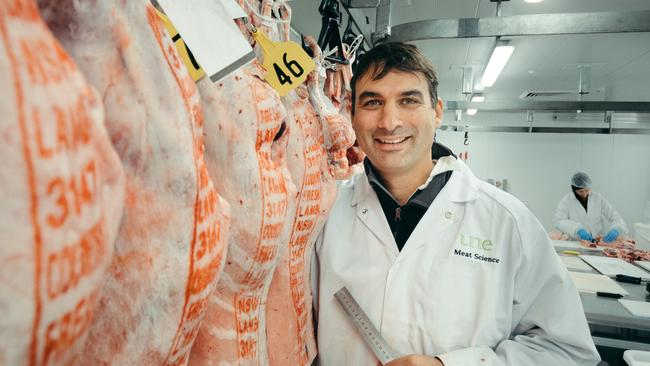Lamb has gotten tougher as breeders chase lean meat yield
Feedback on meat eating quality could help producers breed better tasting product, but the industry lacks transparency. Here’s why.

Lamb meat has gotten tougher and it is falling off Australian food service menus.
This was the blunt message from research scientist, University of New England’s Associate Professor Peter McGilchrist at LambEx last week.
But the pathway to measure eating quality and to provide the necessary feedback to producers had been paved by the beef sector through Meat Standards Australia.
And with greater adaptation and uptake from processors, MSA could also provide an example for lamb to follow, he said.
The leading scientist said the lamb industry needed to act “fast” if it wanted to arrest the decline that has been witnessed in the popularity of lamb on food service menus in Australia in recent years.
Prof McGilchrist presented data on genetic trends in terminal sires which showed shear force, or toughness of the meat, had increased rapidly from 2000 to around 2017, along with lean meat yield.
In the same period intramuscular fat – a key determinate of a good eating experience – had decreased.
Since 2017, the genetic trend had improved with shear force declining again as breeders focused more on using breeding to select for eating quality.
The IMF trend had also began to lift from about 2019, but in general, was still well below levels recorded in the mid-2000s.
“We are losing ground in food service in Australia,” he said.
But to make improvements, producers needed not only price signals but better information to base their genetic and management selection decisions on.
The feedback of eating quality data back to the producer from the processor was not adequate, in fact it was the “black hole of the sheep industry”, Prof McGilchrist told the 1500 farmers, processors, researchers and other service providers at the major forum.

He said lamb was not going to “win on price” so needed to focus on eating quality to remain competitive and in demand.
And regarding how lambs and sheep were bought and sold, he also challenged the industry, including livestock buyers, to “rethink strongly held views on (the eating quality attributes of) highest, old-season and new-season lambs” and to consider whether dentition was relevant when eating quality often improved with age.
“We need (more investment in MSA) technology that measures the tenderness at line speed (in the lamb processing plant),” he said.
While yield and quality attributes were “antagonist” when making breeding selections, he said producers aiming to breed profitable sheep first needed to breed animals suited to their farm conditions, and then, that suited the market they were targeting.





